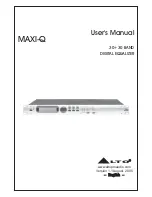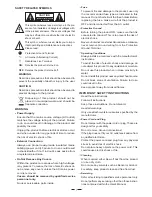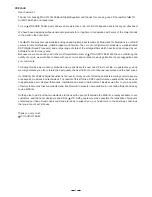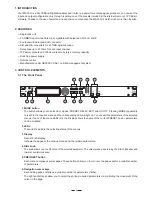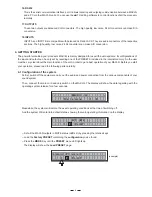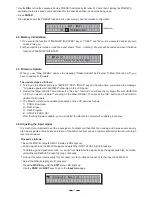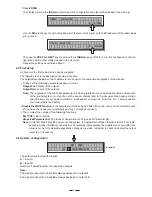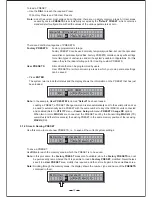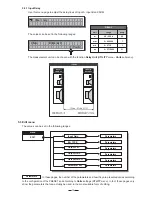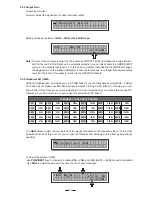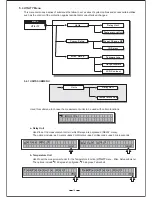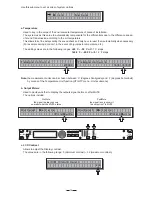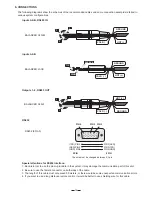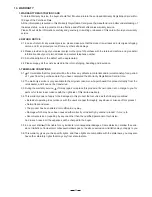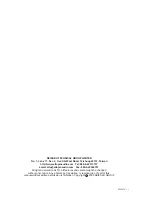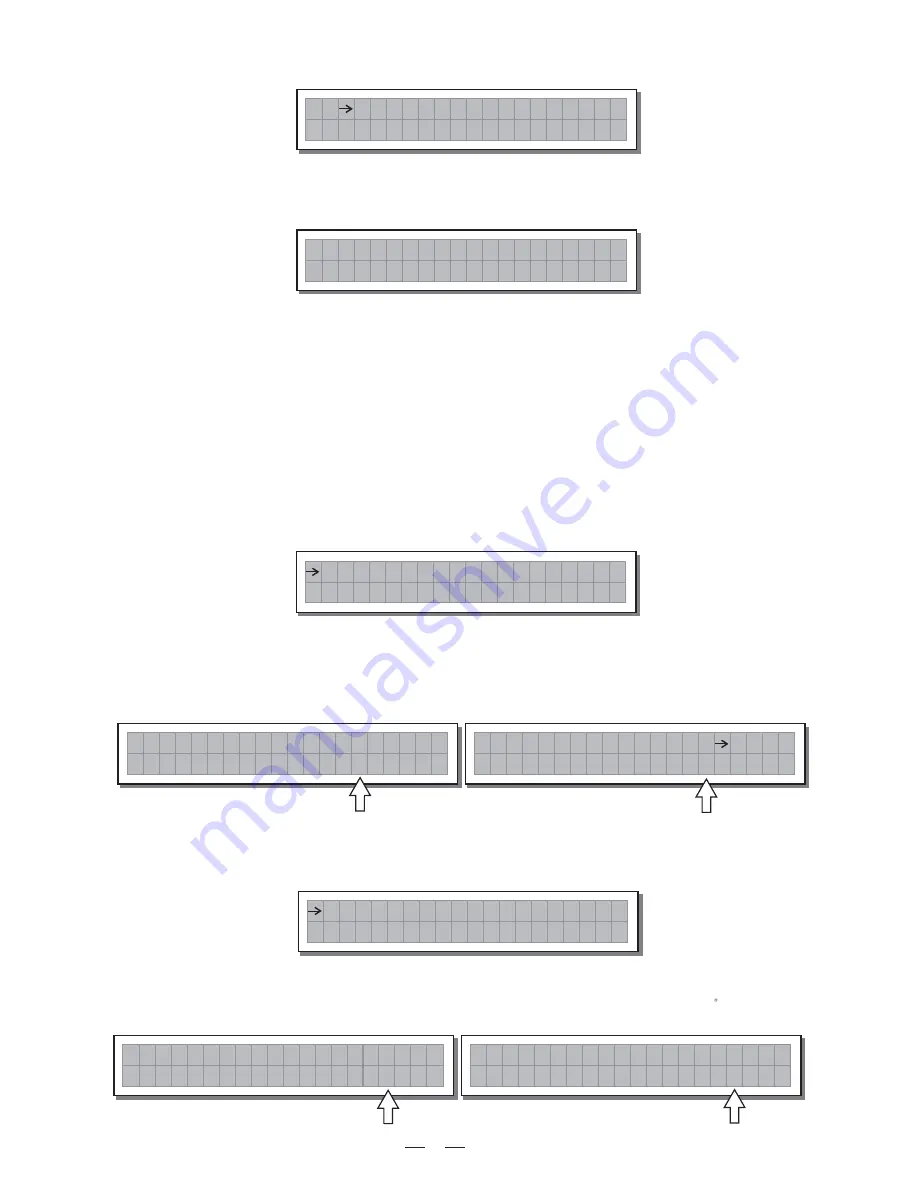
13
To choose the EQ TYPE, press ENTER key and then use DIAL knob to choose Link or UnLink mode.
If have chosen Link and press ENTER key, an inquiry will be displayed to ask whether you are sure to
use the Link mode, if you are please press ENTER key again.
E Q U L I Z E R
L I n K
T Y P E
E r a s e
B
&
A
B
A R E
Y O U
S U R E
Normal: leaves the phase unchanged
Reverse: shifts the phase through 180 , inverting it.
O P 1
N o r m
P O L A
a I
R I T Y
O P 1
e v e r
P O L A
s e
R I T Y
R
5.3.3 Output Pol
Controls the output's polarity.
Allows to invert the phase of the signal of individual outputs.
Editing values are:
O u t p u t
P o l
Allows to adjust the amplification of the signal fed in through Inputs A and B.
Editing values are in the range
+6dB ~ -30dB, with 0.5dB steps.
I n p u t
G a i n
I N A
G A I N
- 2 . 5 d B
Note:
Setting the input signal of a digital unit is particularly important, much more than on an analog unit,
as any saturation of the A/D converter due to an excessively high input signal causes a typical parti-
cularly distinct noise. To achieve a good signal/noise ratio, i.e. an up-front distortion free signal, feed a
signal in on the MAXI-Q's input and watch the
LED ladders. Keep the signal quite
INPUT LEVEL A-B
high, but make certain the red
LED doesn't light on
CLOP
continually.
5.3.1 Input Gain
Input gain control.
5.3.2 EQ TYPE
E Q
T Y P E
There are two
:
and
.
EQ TYPE LINK
UNLINK
The channel A and B may be "linked" together as stereo pairs, so that changes are simultaneously applied
to both channels. However, if you intend to use the channel delay function for speaker "time alignment"
then you should NOT use the
.
"linked" mode

